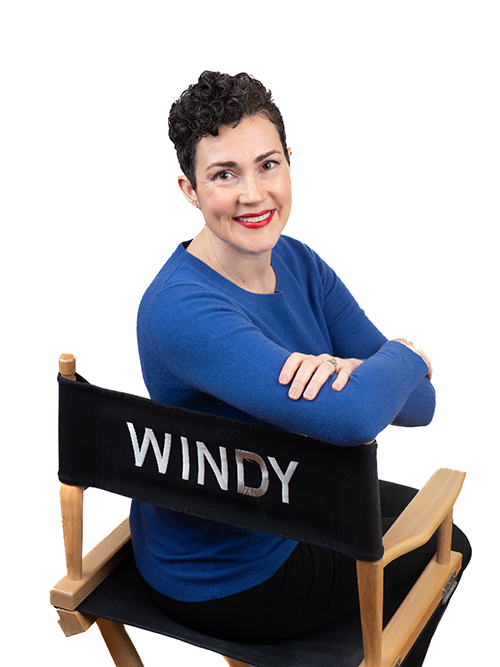It’s an undeniable truth that you will have an easier time promoting your project/business/film if you have celebrity support. The support can come via social media and publicity, a producer credit, narration, or (the holy grail) an on-camera appearance/interview.
But how do you attract celebrity talent if you don’t already have a connection?
In this post I will outline the 10 steps I followed for attracting celebrity talent for my cause-oriented documentary films. The results were Ashley Judd agreed to narrate “The Eyes of Thailand” and we landed an interview with Melissa Etheridge for “Mary Janes: The Women of Weed”.
It’s important to note we also had celebrity interviews in “The Big Picture: Rethinking Dyslexia”. However, when a Redford directs the film and Yale University funds it, getting through “gatekeepers” is much easier and it doesn’t follow the traditional path outlined below. Hence, I’ve excluded that experience from this post.
Here are my 10 Steps for Attracting Celebrity Talent to Your Cause-Oriented Documentary Film:
#1: Put Your Best Foot Forward
Celebs are pitched on everything. Even though your business is in start-up mode or project/film is not complete, you need to look successful with strong distribution potential in online searches if you want them to consider supporting your film.
To increase your chances of working with celebrity talent, make sure your subject is timely and your marketing materials (film trailer, brand film, look book) hooks the viewers. Having a great website, social media presence, and press kit will also help to stand out from the crowd. Learn more about Electronic Press Kits (EPKs) here.
If you aren’t sure how your project/film/business looks to an outsider, search for it online using keywords and the title/name. Then compare that with searches for your “comps” (comparable projects/films). Adjust your appearance as needed.
#2: Research Celebs Who Care About Your Cause
Once your presentation materials are on point, you can begin searching for celebrities to approach. Look to the Stars follows the world of celebrity giving, and their website is a vital resource for cause-oriented projects.
Start by searching for all of celebrities that are outspoken about your cause. If your project/film ties multiple causes together, make a list for each cause and note which names appear multiple times.
Next, organize the potential celebrities you want to approach into tiers. You’ll reach out to your top tier (Tier 1) first, then move on to Tier 2, Tier 3, etc. as needed.
When thinking about your tiers, factor in inclusivity, diversity, and representation. Also consider current events and recent press. For example, if your project is about female empowerment, you’ll lose your audience if you approach someone who was named as a predator in the #MeToo Movement. Likewise, if the film is about a community of color, asking a White actor will appear insensitive.
Representation matters for your film and it matters to the celebrities you approach. Finding talent who is a good fit increases your chances of success.
#3: Write a Killer Query Letter
A Query Letter is similar to an Offer Letter, but instead of offering them a role, you’re inquiring as whether they would be available to participate in your project/film. If they say “Yes”, you’ll formalize the request with an Agreement.
Address the letter to the talent by name and save it as a one-page pdf, because you’re going to attach it to your emails in Step #4 . The reviewer will scan the Query Letter, so I divide the content into several short paragraphs. This makes it easier to skim and up-level the request if it seems like a fit.
My most successful Query Letters follow this paragraph sequence after my Greeting:
- Introduce myself
- Introduce the project/film and highlight any connections to their cause(s), events you attended where they spoke, etc.
- Give the project/film synopsis and tie it into current events.
- Share the Production Schedule (Are you in Production? Post-Production? Distribution?), Timeline, and any important upcoming events, such as product launches or festival premieres.
- Make the request and highlight the amount of time you need. (Note: 1-2 hours on camera or in the audio booth should do it.)
- Share your recent successes, including other films you’ve directed/produced, other celebrity supporters, or partner organizations they may have heard about.
- In your closing, thank them, include that you appreciate the opportunity, and ask if they have time to speak next week. (This sets the stage for your follow-up in Step #6).
#4: Send your Request Through their Manager (not their Agent)
Agents look for money; Managers look for opportunities. Since you are a cause-oriented project/film, you’ll look up the contact details for their Manager using IMDbPro. (You can sign up for a 30-Day free trial, if you aren’t already a member).
Address the email to the Manager. Include a short (1-2 paragraph) introduction in your email, including a link to your website (which should have your film trailer and other important details). Attach the Query Letter as a pdf.
Most requests will initially go through the Manager’s Assistant, so be polite and friendly with them. When you first connect with their assistant, ask for their first name so you can call them by their name when you follow up (Step #6 and beyond).
#5: Make Your Request Early
Don’t wait until you have a Festival Premiere to reach out to celebrities and hope they are available to squeeze you in. I made that mistake with “The Eyes of Thailand” (2012) and it made for a stressful voice over recording session.
Ashley Judd was miraculously available to record the Voice Over in time for our April festival deadline, *if* I flew Nashville to record it near her. I did and booked studio time at the sound studio she preferred. Everything was lining up perfectly… until I landed in Nashville and checked my voicemail. Ashley had lost her voice and her manager would update me in the morning! Long story short: it took her four days to get her voice back, during which time I had to scramble for a place to stay. I had to negotiate for recording studio time each day “just in case” Ashley got her voice back, and the rental car and airline companies were unforgiving about my dilemma. With the stress of it all, I ended up in the ER because I pulled my neck so badly I needed painkillers.
Once we got into the sound booth, everything was a breeze. Ashley was a total pro. She had enough of a voice to do 1-2 takes on each line of narration—and nailed it. I gave her “get well soon” flowers, and never mentioned anything about my troubles.
Now, if I had more than one week to deliver the final voice over recording to our Post Production House, I would have had more—and less expensive—options available.
Lesson learned: Make the request early.
#6: Follow Up
By the time I was filming “Mary Janes: The Women of Weed” in 2016, I knew I needed to reach out to celebrities early. I began my outreach and engagement with celebrity talent (through their managers) in February. Schedules did not align immediately, but we stayed optimistic and reached out whenever we had an update (new press, more celebrity support, a successful fundraiser, etc.).
By December the stars finally aligned with Melissa Etheridge. She was available to give an on-camera interview for one hour… in St. Louis… before her concert. Done! We flew to St. Louis and transformed a hotel room across the hall from hers into an interview location. (All I can share publicly is thank goddess my cinematographer traveled with a battery-powered drill!). We set up her hair/makeup person in the bathroom with a monitor, so he could watch her appearance. (Not ideal, but that’s the closest we could get him to “set”). The interview was great and we had permission to film her sound check, so we recorded B-roll of her performing without having to pay for performance fees or master music licenses.
Because we built a positive rapport with her team, the ten months of follow-up paid off!
#7: Be Flexible and Specific About What You Really Need
You’re in San Francisco and they’re in Nashville? Find a recording booth in Nashville and buy a cheap flight for yourself.
They’re only available on certain dates or days of the week because they want to be home with their kids? You completely understand and will work around their constraints.
They’re only available for one hour before a concert sound check? No problem. You’ll have everything set up across the hall and one hour is perfect.
You get the idea: Be as flexible as possible and only ask for what you really need.
#8: Offer Some Type of Compensation
As an indie filmmaker or start-up, your budget probably can’t afford their usual rate. However, offering something will go a lot farther than coming with an open hand and begging for support. Offering additional credit, equity, or direct compensation based on the profitability of the film/project are all options to traditional paid offers. Use your offer as a starting point to negotiate once you are on the phone with their Manager.
#9: Be Prepared to Pay Other Fees
Even if the celebrity declines performance fees for a Voice Over, expect to pay other fees. If your celebrity is a member of SAG or another union, you’ll be asked to cover their union fees for audio/video recordings. If they have a particular sound technician or recording studio for the Voice Over, hire their preferred vendors (and ask if they have indie film rates).
While it is not typical to pay a performance fee for an on-camera interview, your celebrity may want to use their hair, makeup, or wardrobe team. Ask the vendors for their indie rates and hire them. Same goes for their lighting, sound, and camera operators.
At the end of the day, you want your talent to feel comfortable and supported. Plus, they are donating their time (or at least significantly reducing their rate), so these minor expenses are worth the savings.
#10: Be Gracious and Stay in Touch
This should go without saying, but say “Thank You” and continue to build a positive relationship with the celebrity’s staff.
Your relationship does not end once you wrap the interview or VO recording session. In fact, your contract will likely include an “approval” clause where the talent/manager/attorney will get to approve the footage and/or on-camera quotes in the project/film.
You’ll also want a positive relationship because you’re going to ask for quotes and photos for your press releases and EPK (Electronic Press Kit). While you’re top of mind, ask how they’d like to handle any social media mentions, press interview requests, appearance requests, etc. They may introduce to key members of their team (publicist, social media manager, personal assistant, etc.) and you’ll continue to be gracious because that’s how you roll.
Finally, when your film premieres, send the team some S.W.A.G. as a thank you, and definitely send physical product/copies of the completed project/film. Your celebrity may never take a photo wearing your S.W.A.G. or holding your product/film, but the team will appreciate having something to share as a thank you for their efforts.
If you have any questions about attracting celebrity talent to your cause-oriented film, drop me a note.


